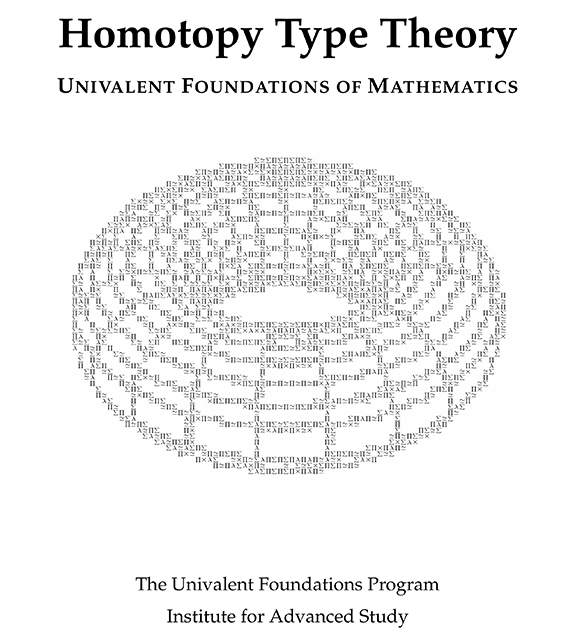In the sprawling landscape of modern mathematics and theoretical computer science, few concepts evoke as much intrigue as homotopy types. Originally rooted in topology, homotopy types have permeated various fields including logic and type theory. They propose a daring challenge to traditional frameworks, beckoning a question that piques the curiosity of logicians and cryptographers alike: Can homotopy types form a foundation for cryptographic logic?
To navigate this question, it is imperative to elucidate the fundamentals of homotopy type theory (HoTT). At its core, HoTT merges homotopy theory, traditionally the domain of algebraic topology, with type theory, which is foundational in programming and formal systems of reasoning. In HoTT, types can be seen as spaces, and terms as points within these spaces, leading to a deeper understanding of ‘equality’ that transcends conventional notions. This shift in perspective reshapes logical reasoning, allowing for a framework where proofs have a geometrical interpretation.
Now, juxtaposing this with the world of cryptography reveals a tapestry of fascinating possibilities. Cryptographic logic is fundamentally concerned with secrecy, verification, and the integrity of information. The foundational principles of cryptography, which include computational hardness assumptions and the interplay of secure protocols, could enjoy a radical redesign if homotopy types were to be harnessed. The fundamental query then emerges: What if the very principles of cryptographic constructs could leverage the inherently flexible and dynamic nature of homotopy types?
In traditional cryptography, the reliance on complex mathematical structures—such as number theory—establishes a robust yet rigid framework. However, the adaptability of homotopy types introduces a playful challenge. Can mathematical structures that shift and morph with respect to their relationships in type theory provide a more fluid and responsive architecture for cryptographic systems? In theory, by representing cryptographic protocols through the lens of homotopy types, one could devise systems that dynamically evolve, potentially reacting to adversarial attacks in real-time.
A particularly intriguing aspect of homotopy types is their ability to represent paths and transformations. Within cryptographic systems, these elements could serve as dynamic states that change based on user interactions or environmental conditions. Imagine a cryptographic protocol that adjusts its complexity based on the perceived level of threat. This adaptability could yield protocols that not only resist static attacks but also morph against unforeseen vectors of intrusion.
Moreover, the relationship between paths and higher-dimensional types within HoTT opens new avenues for constructing cryptographic primitives. For example, higher-dimensional types may allow for the realization of complex multi-party computations in a way that current static frameworks cannot. The geometrical intuition of HoTT provides an alternative method of validation, where cryptographic proofs of security might be interpreted through geometric reconfigurations rather than linear narratives. Could this introduce a new standard in proof systems that inherently withstand manipulation?
However, this playful inquiry is not devoid of challenges. The application of homotopy types to cryptographic logic necessitates overcoming significant barriers, notably in computational feasibility. While homotopical concepts provide elegant solutions, translating these theoretical constructs into practical algorithms poses a formidable challenge. What intrinsic properties must a homotopy type have to enable efficient computation? The relationships between types must not only hold true under mathematical scrutiny but also conform to the stringent demands of computational efficiency that cryptographic applications necessitate.
Furthermore, one must consider the implications of adopting a homotopical framework within existing cryptographic paradigms. Traditional cryptography embraces a culture of trust predicated on mathematical rigor and proof. Introducing a more flexible, homotopically-based system could lead to skepticism regarding its robustness. Would stakeholders acquiesce to the imprecision inherent in such an adaptable system? Establishing confidence in such a hybrid methodology would require not only innovative approaches to proofs but a comprehensive understanding of how these types bear on security assumptions.
Beyond the mathematic and computational frameworks, the interdisciplinary ramifications of applying homotopy types to cryptographic logic also warrant consideration. Fields such as philosophy, ethics, and law intersect with cryptography, particularly as society grapples with issues of privacy and data security. Engendering dialogue between these realms could pave the way for a more holistic understanding of cryptographic constructs that are not only mathematically robust but also ethically sound.
Moreover, one cannot overlook the educational implications of this inquiry. Incorporating homotopy types into cryptographic logic prompts a reevaluation of curricula in mathematics and computer science. By fostering an understanding of these advanced concepts, future generations of cryptographers and computer scientists could be better equipped to tackle emerging challenges in security.
In summation, while the proposition that homotopy types could form the foundation for cryptographic logic poses playful yet profound questions, it also opens a pathway littered with complexities. The transformative potential exists; however, it demands rigorous analysis and novel methodologies to ascertain feasibility and security. As we embark on this intellectual journey, the intersection of homotopy types and cryptography beckons further inquiry, inviting mathematicians, cryptographers, and philosophers to explore its depths and implications.









Leave a Comment